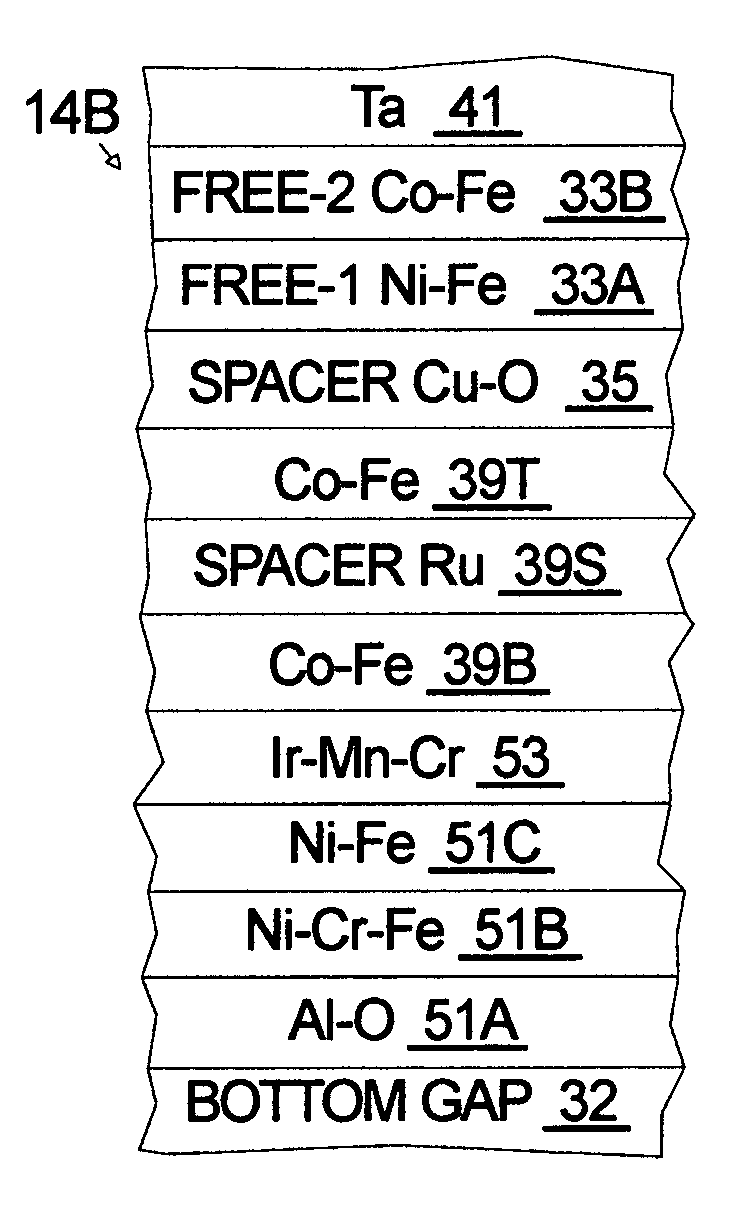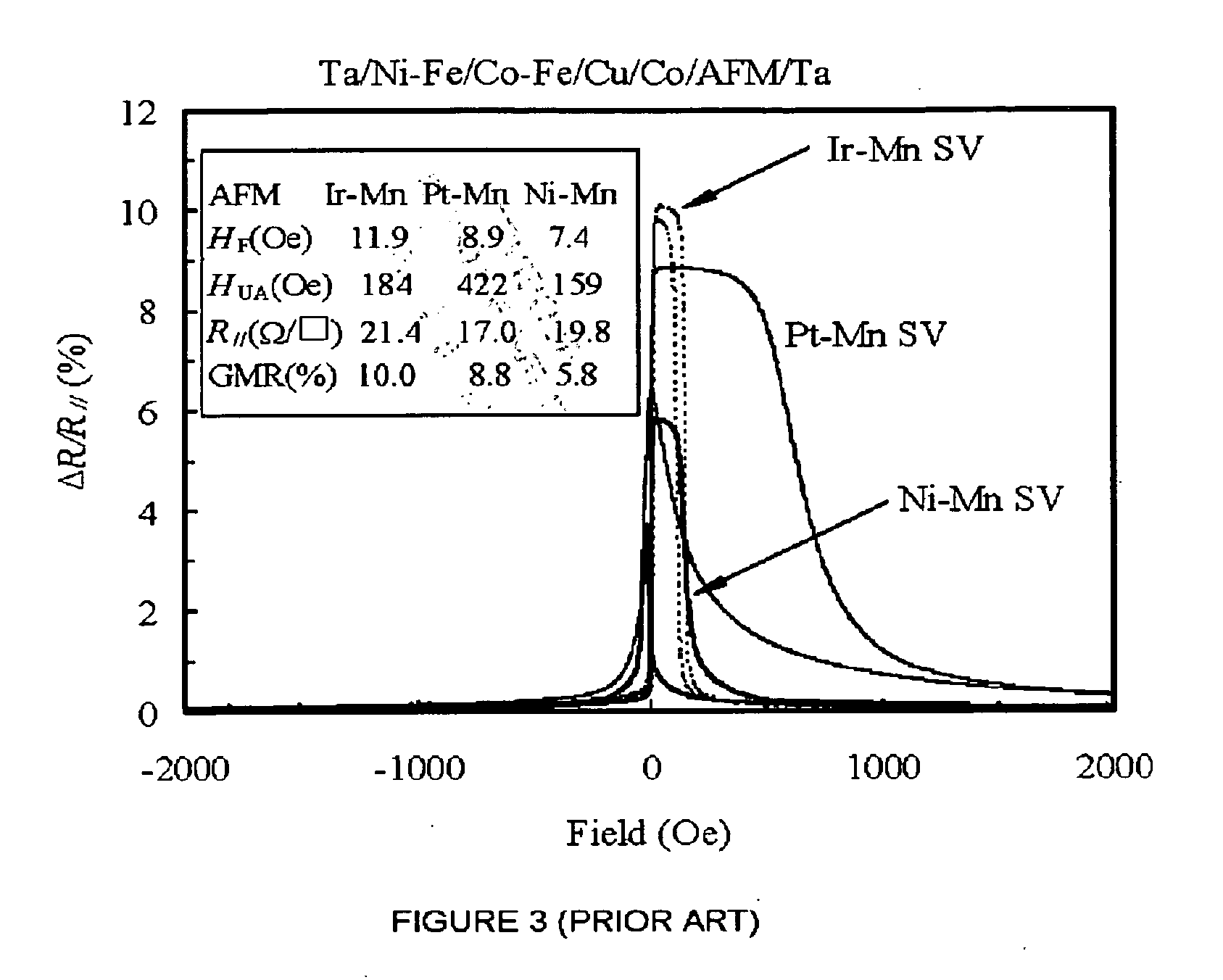GMR sensors with strongly pinning and pinned layers
a layer and gmr technology, applied in the field of magnetic transducers, can solve the problems of low tsub>b /sub>, low corrosion resistance, and difficult, or almost impossible, and achieve the effect of optimally biased sensor operation, zero net magnetic moment, and simplified design
- Summary
- Abstract
- Description
- Claims
- Application Information
AI Technical Summary
Benefits of technology
Problems solved by technology
Method used
Image
Examples
Embodiment Construction
[0072] A bottom-type giant magnetoresistance (GMR) sensor 14B with strongly pinning and pinned layers, as shown in FIG. 7A, is described for magnetic recording at ultrahigh densities according to the invention. The GMR sensor 14B is used in a current-in-plane (CIP) storage system, and can be also used in a current-perpendicular-to-plane (CPP) storage system. The thicknesses shown in the figures are not according to scale. The thickness of the layers are according to the prior art except where note below. The bottom gap layer 32 is preferably an Al2O3 film deposited on the bottom shield layer (not shown). The bottom gap layer 32 is formed according to the prior art and is followed by the seed layers 51 according to the invention. The pinning layer 53 is deposited next and is followed by a first pinned layer 39B, an AP spacer layer 39S and a second pinned layer 39T. The GMR spacer layer 35 separates the second pinned layer 39T from the free (sense) layers 33. The cap layer 41 is depos...
PUM
 Login to View More
Login to View More Abstract
Description
Claims
Application Information
 Login to View More
Login to View More - R&D
- Intellectual Property
- Life Sciences
- Materials
- Tech Scout
- Unparalleled Data Quality
- Higher Quality Content
- 60% Fewer Hallucinations
Browse by: Latest US Patents, China's latest patents, Technical Efficacy Thesaurus, Application Domain, Technology Topic, Popular Technical Reports.
© 2025 PatSnap. All rights reserved.Legal|Privacy policy|Modern Slavery Act Transparency Statement|Sitemap|About US| Contact US: help@patsnap.com



